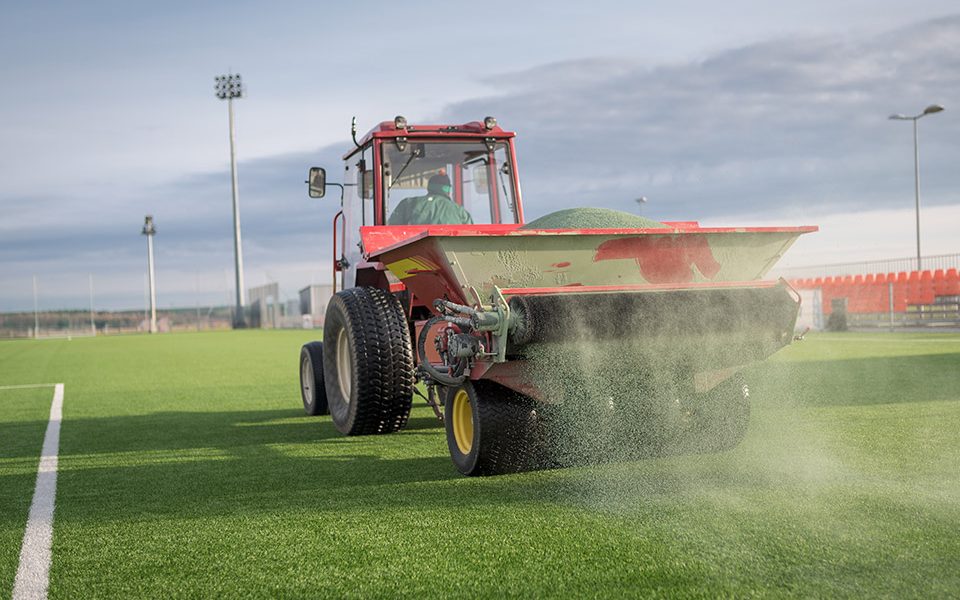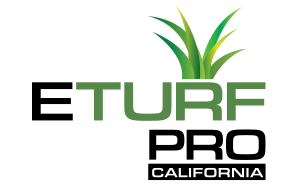Which Is The Best Artificial Turf Infill Option?
Artificial turf is a versatile innovation that enables one to create a perfect outdoor environment in any setting or climate. It enhances the performance and appearance of natural grass while allowing you more control over your terrain’s longevity, appearance, and texture.
But just like natural grass grows from a cushion of sand or soil, synthetic turf needs support from infill. Before installing synthetic turf, it is vital to understand the different types of infill and their importance.
Turf Infill and Why It’s Important
Turf infill refers to the products placed between the fibers or blades of artificial grass for stability and support. It helps grass blades stand up or return to their upright position after being subjected to pressure. It also shields the backing used on fake grass from damage caused by sun rays.
Apart from stability and support, turf infill helps to enhance the grass’s look and give it the feel of natural grass. Another benefit of turf infill is that it adds volume and aids drainage, so you will not have to deal with standing or pooling water after it rains.
Since athletic fields must have enough bounce and cushion, turf infill enhances volume to the turf’s top layer while providing a substitute for clay, sand, soil, and other natural ground materials which might be scarce on your property.
Most Popular Options For Turf Infill
Turf manufacturers have come a long way since the dirty and toxic rubber that once padded artificial grass. Today, the most popular turf infill options include:
Coated Sand
Synthetic turf with sand infill is among the best options because of its consistent performance and superior durability. The sand granules are coated in an acrylic polymer, leading to a material that is synthetic and organic.
The acrylic coating prevents bacterial growth in the grass and stops the sand from becoming compacted, thus reducing foul odors and protecting the turf. In addition, coated sand is durable, lowers the surface temperature of synthetic turf, and does not wash out easily.
This turf infill option is still soft enough for use in sports and offers a more comfortable landing compared to natural grass.
Crumb Rubber
Crumb rubber is made from recycled automotive tires that have been grounded into small, smooth pieces, then rolled till all the rough or sharp edges wear. Crumb rubber is a widely used infill because it is relatively cheap, non-abrasive, and readily available.
Dimensional stability is also easy to maintain since each granule works together to support synthetic turf blades.
The benefits, however, do not go beyond that. Some may be concerned about its health risks since there are about 90 chemicals in the product.
It may also be dirty and have an offensive odor and must therefore be appropriately disposed of after its life. Additionally, crumb rubber will hold heat, further adding to health concerns about the turf.
Silica Sand
Silica sand stems from quartz that has been eroded by water and wind. As it erodes, it breaks down to trivial granules. As an artificial grass infill, silica sand helps to keep the blades upright, just like other infill options. Another upside of this infill is that it is generally cheaper than other infill materials.
The major downside is that the sand is not rounded but angular, which may result in premature fiber breakdown. It tends to harbor moisture which can result in bacteria growth on the surface and mildew and mold.
The sand composition can also harden, meaning that your synthetic turf may lose its permeability. Finally, it is known to trap pet odor; therefore, if you have pets, this is something you may want to stay away from.
Durafill Sand
Durafill is an infill option made for artificial grass. It is made of rounded quartz core and stays cool, preventing your artificial turf from heating up. In addition, it has antimicrobial properties.
They help eliminate bacteria and do not absorb liquid, making it an ideal infill material, especially if you have pets. Its rounded shape allows for a more natural and softer impact absorbency without damaging the turf’s fibers.
The only downside of Durafill is that it is quite expensive than rubber infill and silica sand. Additionally, it barely covers the same amount of space.
Durafill is a good infill option for your synthetic turf if your budget allows it. It is easy to install, and you can use it on several faux turf applications, including play spaces, lawns, dog runs, pet training areas, areas that are prone to high traffic, and almost anywhere else you may use artificial grass.
Virgin Polymer
Virgin polymer is similar to crumb rubber, only that it is a virgin product. This means it is made of known components that can be modified to enhance the final product and eliminate specific chemicals.
Other benefits include non-abrasiveness, consistency, resilience, and inclusiveness of safe chemicals. Some cons are that it can be challenging to control the quality of foreign-sourced material, and it is more expensive than other types of turf infill.
Zeolite
This non-toxic, pet and child-safe volcanic material contains moisture-absorbing properties. Additionally, it absorbs odor and is USDA-approved. This means it is a popular turf infill option for homeowners with pets because it prevents odors by getting hold of ammonia in urine and preventing it from turning into gas.
Choosing The Best Artificial Turf Infill
When selecting the best turf infill, you should ensure the material fits your needs. You must also consider product ingredients and their impact on the environment.
Given the lack of quality information online, choosing the best infill can seem challenging. But overall, Durafill is perhaps the best all-around option. Zeolite is the best for neutralizing pet smell, while rubber is ideal for athletic fields. Finally, silica sand is the cheapest.
That’s it! We hope this has gone a long way to drilling down your artificial turf infill options for your project. But if you are still unsure, rest assured that we can help you pick the ideal infill option for your lawn.


